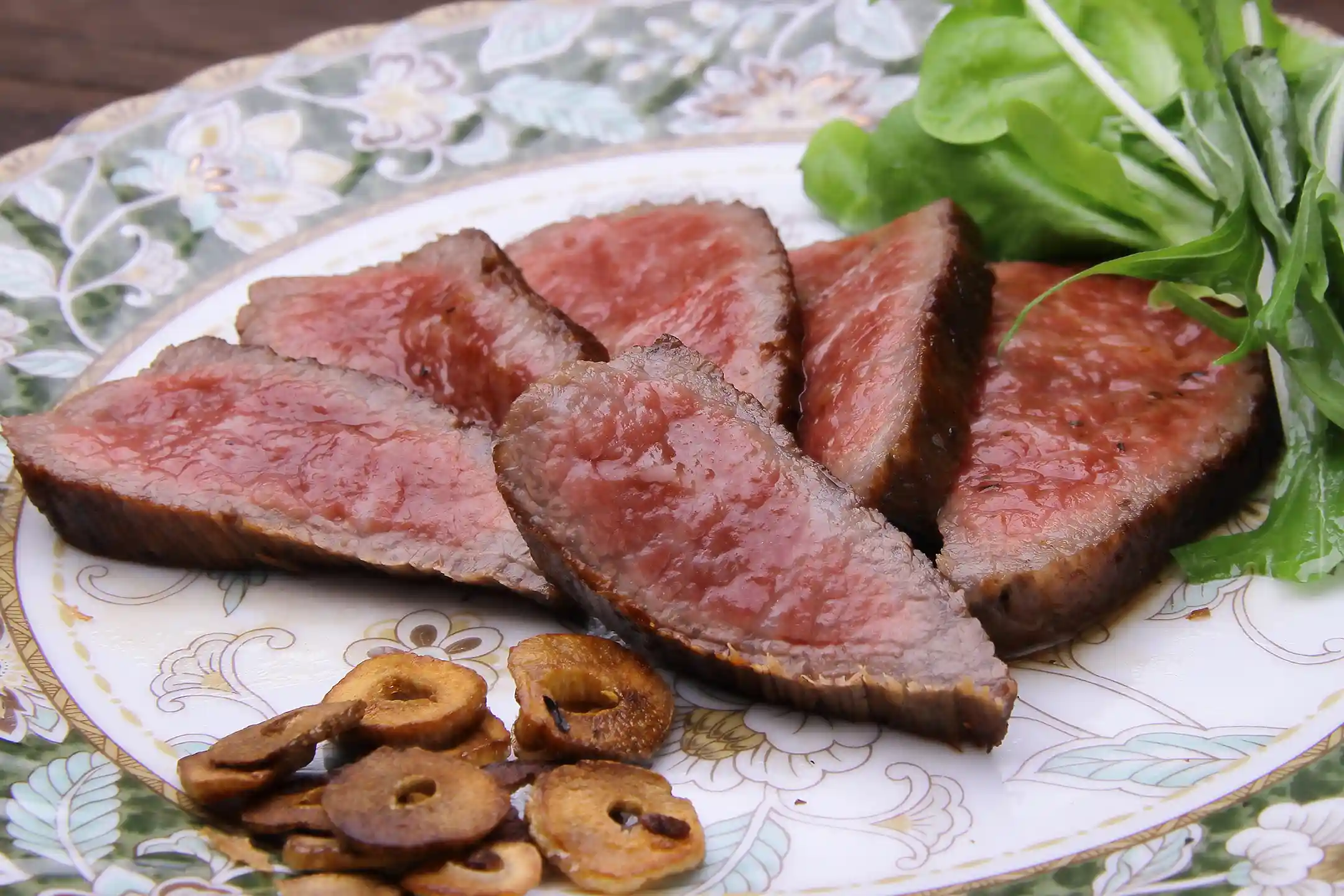Where Western palates often favor bold flavors enhanced by fragrant herbs and spices, Kyoto’s chefs elevate the natural character of each ingredient, celebrating delicate umami and the sensations of the changing seasons. If you are experiencing this subtlety for the first time, you might find it almost understated—yet give all five senses a chance and you will uncover remarkable depth.
Nothing is left to chance: from plating to the ambiance of the room, every detail receives meticulous attention. Whether you see that as formality or as pure art depends on your own background and values. Kyoto’s dining scene is one of the few places where you can feel this constant interplay of cultures firsthand. Courtly elegance, Zen spirituality, and fresh winds of each era have layered together to create a spectrum of food experiences that feel at once novel and strangely nostalgic.
What Defines Kyoto Cuisine? Courtly Subtlety Passed Down Through the Ages
For over a thousand years Kyoto served as Japan’s capital, where the imperial court, warrior houses, and temples each cultivated their own culinary traditions. Court‑inspired dishes are renowned for invisible gestures of hospitality and restrained seasoning. Rather than amplifying individual flavors with rich sauces or herbs, Kyoto cooking focuses on umami, elegant plating, and vessels chosen to complement each bite.
Buddhist shōjin ryōri, which originated in Zen monasteries, also left a deep imprint on Kyoto’s food culture. Although it excludes meat and fish, shōjin ryōri leverages a wide range of plant‑based ingredients and techniques to achieve remarkable complexity. Its ethos of “subtracting to enhance” mirrors certain Western art theories and will likely surprise you with its creativity.
Nowhere is this heritage more evident than in kaiseki cuisine. What began as a humble meal served during the tea ceremony evolved over centuries into Kyoto’s signature dining style, distinguished by seasonal expression and artistic presentation. Each petite course embodies the Japanese appreciation of “ma,” the beauty of empty space, inviting you to savor ephemeral flavors available only in that moment.

In 2013, Washoku—traditional Japanese cuisine—was recognized by UNESCO as an Intangible Cultural Heritage, thrusting Kyoto’s culinary mastery back into the global spotlight. While Japanese food may seem mysterious from a Western vantage point, it is fundamentally anchored in harmony with nature and in thoughtful consideration that extends beyond what meets the eye. Understanding these values can inspire you to reflect on your own culture while making discoveries that resonate on a personal level.
Recommended Kyoto Restaurant Styles: From Kaiseki to Machiya Dining
Kyoto’s dining options span venerable kaiseki restaurants, character‑filled machiya conversions, and boundary‑pushing fusion spots. Each style offers its own cultural backdrop and service approach, so understanding these differences will help you choose the perfect venue for your visit. Below are a few key categories.
Iconic Spots to Savor Kaiseki
Kaiseki is arguably the most immersive way to experience Kyoto’s aesthetic ideals through all five senses. While it may feel intimidating, many flagship restaurants now offer English menus and other touches to make you feel welcome.
Take the three‑star institution Kikunoi: here, cuisine, garden views, and omotenashi hospitality converge into a unified artwork. Unlike Western tasting menus that center on flavor and portion size, a kaiseki meal invites you to explore layers of space, history, and atmosphere as integral parts of the experience.

Discovering the Allure of Machiya Restaurants
Another highlight is dining inside a renovated machiya, Kyoto’s traditional wooden townhouse. These buildings are long and narrow with a small courtyard at the rear—once doubling as both shopfront and family home. Unlike Western homes with a single expansive living room, machiya embody a Japanese sensitivity to flowing spaces and natural light.
Hyoto pairs a serene, modern‑Japanese interior with shabu‑shabu and hot‑pot dishes whose delicate broth showcases each ingredient from a different angle than Western stews or pot‑au‑feu. Meanwhile, the Inoda Coffee Main Store fuses classic café culture with machiya ambience, revealing a slice of history where Western and Japanese influences intertwined.
Modern‑Meets‑Traditional Fusion Restaurants
Kyoto also rewards curiosity with inventive fusion concepts that marry traditional ingredients and cooking methods to global techniques. Rather than diluting “Japaneseness,” this adaptability epitomizes the ancient capital’s core strength.
Lurra˚, housed in a Gion machiya, combines Nordic culinary philosophy with Kyoto terroir. Fermentation and wood‑fire cooking evoke a sense of oneness with nature reminiscent of Nordic sauna culture while echoing Japan’s own reverence for the natural world. Gion Duck Noodles blends comforting noodles and rich duck broth with French haute‑cuisine touches, elevating a humble ramen format through premium ingredients and refined technique. These ventures prove that respectful fusion can generate synergistic creativity.
More Than Eating: Hands‑On Learning Experiences in Kyoto

Kyoto invites you not only to taste but also to make food while discovering the history and philosophy behind each dish. Unlike many Western cooking classes, Kyoto workshops often weave in etiquette and seasonal customs, turning passive observation into active cultural exchange.
Cooking Classes & Wagashi Workshops With the Pros
Cooking Sun (*1)
Held in a central machiya, this foreigner‑friendly class guides you through Japanese home cooking, from ingredient selection to plating, while also exploring hospitality rituals unique to Japan. Many staff have lived abroad, so your questions and culture shocks will be handled with care.
Kanshundo Wagashi Experience (*2)
Run by a confectionery with over 150 years of history, this workshop lets artisans teach you the art of nerikiri sweets. Compared with Western pastry, the attention to subtle shapes and colors surprises many participants. Wagashi express the seasons and Kyoto’s view of nature, offering a hands‑on insight into Japanese aesthetics.
Tea Ceremony Workshops
The tea ceremony epitomizes Japanese spirituality. Beyond whisking matcha, you will learn how to sit, interact with the host, and embrace a moment of mindful silence. Short sessions are increasingly available, making this a perfect way to feel Japan’s etiquette and beauty firsthand.

Guided Restaurant Tours in Historic Architecture
Tondaya Machiya Kaiseki Under Night Illumination (*3)
Dine on kaiseki inside a nationally designated cultural property while a guide explains the building’s history and design. You’ll gain a deeper appreciation of the machiya itself, not just the meal.
Architectural‑Guided Kaiseki Tours
Experts on wooden architecture and garden design walk you through the spatial narrative before you sit down to dinner. Similar to European castle tours paired with fine dining, Kyoto’s version intertwines “food” and “structure,” enriching your sensory and intellectual experience alike.
Choosing Kyoto Restaurants That Are Both Sustainable and High‑Tech
Although Kyoto is famed for protecting tradition, the city is also innovating in sustainability and technology. From organic sourcing to food‑loss reduction, these initiatives align naturally with Kyoto’s cultural ethos of achieving refinement by eliminating waste.
Efforts in Sustainable Sourcing and Procurement
ERUTAN RESTAURANT/BAR (*4)
With “living in harmony with nature” as its motto, ERUTAN transforms brewing byproducts into pizza dough and digitally monitors each cooking stage to minimize waste—melding cutting‑edge practices with time‑honored Kyoto sensibilities.
La Bûche (*5)
A French restaurant in Ōhara awarded the Michelin Green Star. By working closely with nearby farms and its own garden, it keeps food miles low. Its commitment to using every part of each ingredient echoes Japan’s mottainai spirit and may reveal unexpected common ground with European sustainability values.
Shigetsu (*6)
Located inside Tenryū‑ji Temple, this shōjin ryōri restaurant naturally aligns with modern eco‑consciousness. Vegetable scraps become compost, demonstrating how “minimal means maximum richness” can answer global overconsumption.
Wakuden Group (*7)
From pesticide‑free rice paddies fertilized with recycled crab shells to a sophisticated take on farm‑to‑table cuisine, Wakuden shows how caring for nature can regenerate it—a philosophy shared by leading sustainable restaurants worldwide.
Four Seasons Hotel Kyoto Restaurants
Beyond luxury, the hotel has swapped plastic straws for biodegradable ones and uses high‑tech systems to optimize inventory while partnering with local producers—blending global hospitality standards with Kyoto’s commitment to local, circular practices.
By visiting these restaurants, you will sense Kyoto’s modern interpretation of harmony: a creative dialogue between past and future. Some may worry that new technologies dilute Kyoto’s essence, but history proves the city’s diversity is precisely the result of warmly welcoming outside ideas.
Tips for Enjoying Kyoto’s Restaurant Scene to the Fullest
Kyoto offers a wealth of court‑inspired cuisine and the chance to experience Washoku, now on UNESCO’s Intangible Cultural Heritage list (*1). Because of its worldwide appeal, however, top restaurants can book out quickly. Here are some pointers for a smooth culinary journey and for making the most of seasonal events.
.webp?width=750&height=500&name=Experience%20authentic%20Shojin%20Ryori%20(Buddhist%20temple%20food).webp)
Secure Reservations and Track Seasonal Highlights
The Michelin Guide Kyoto & Osaka 2024 lists numerous starred venues (*2), and coveted establishments—both historic and new—often fill up months in advance, especially on weekends and during peak seasons. Once your travel dates are fixed, use reservation platforms like TableAll or OMAKASE (*3) as early as possible.
Seasonal traditions are essential to Kyoto dining: bamboo shoots and cherry‑bream in spring, hamo (conger eel) during the Gion Festival, and matsutake mushrooms or chestnuts amid autumn leaves. Unlike in the West, where seasonal produce is enjoyed more casually, Kyoto restaurants frequently design special courses around local festivals. Don’t miss summer riverside dining on kawadoko decks or the large‑scale Kyoto Restaurant Special campaign (*5) (*4).
Connecting With Local Chefs and Artists
To dive deeper, engage directly with chefs and the artisans who craft the tableware. Follow them on social media or their websites to catch announcements of special dinners, workshops, and collaborations.
Events where you dine from a potter’s newly unveiled plates or hear a chef’s sourcing tales add layers of meaning to your meal. Ask why a certain shape is popular or why a glaze feels subdued—you will uncover not only historical context but also how Kyoto’s creatives continually chase fresh inspiration behind a seemingly conservative façade. Conversations like these can transform dinner into an unforgettable window onto culture.
Conclusion: Extraordinary Experiences Found Only in Kyoto Restaurants
.webp?width=750&height=500&name=Byodo-in%20Temple%20(Phoenix%20Hall).webp)
Kyoto’s food culture fuses profound tradition with an openness to global ideas. Whether you are drawn to imperial‑inspired kaiseki, the craftsmanship woven into machiya dining, or the bold creativity of fusion restaurants, each facet testifies that Kyoto’s enduring charm comes from embracing change.
Hands‑on programs—cooking classes, wagashi crafting, or tea‑ceremony workshops—let you feel Japanese culture in your own body. Meanwhile, the rise of sustainability initiatives shows how Kyoto is imagining a future that honors its past.
Differences in taste or etiquette may surprise you at first, but those very contrasts often prove the most delightful. When you notice the richness hiding in quiet spaces or understated flavors, you will carry that moment long after your journey ends. Embrace seasonal events and engage with chefs and artists, and you will savor a restaurant scene where tradition and innovation meet in the most captivating ways.
Author Bio

Maoko Shibuya
Content Planner & Writer Holding a master’s in Digital Marketing and experience across global markets, Maoko blends international perspective with a deep appreciation for Japan’s cultural heritage. She plans and writes compelling narratives that reveal the country’s beauty and depth, drawing on her passion for travel, local cuisine, and cultural exploration.


%20in%20Kyoto.webp)

.webp)
.webp)